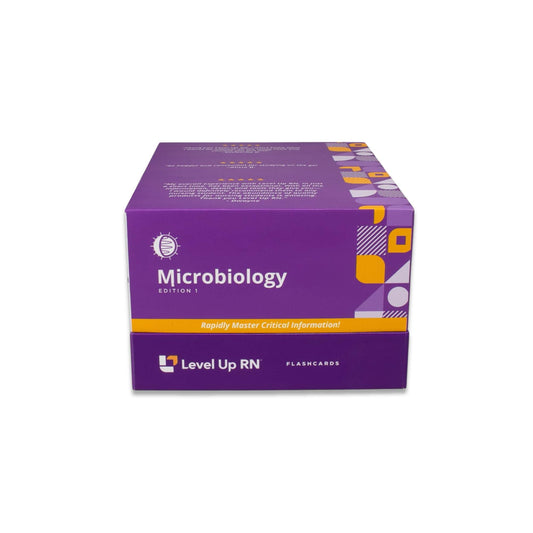Microbiology, part 57: Control of Growth - Antimicrobials - Nucleic Acid Inhibitors
Antimicrobial drugs that inhibit nucleic acid synthesis: nitroimidazoles (metronidazole), rifamycins (rifampin), and fluoroquinolones (ciprofloxacin, levofloxacin).
Quiz Questions
Which nucleic acid synthesis inhibitor is used to treat tuberculosis?
Which nucleic acid synthesis inhibitor is used to treat tuberculosis?
Which nucleic acid synthesis inhibitor is commonly used to treat parasitic infections?
Which nucleic acid synthesis inhibitor is commonly used to treat parasitic infections?
Which nucleic acid synthesis inhibitor targets DNA gyrase?
Which nucleic acid synthesis inhibitor targets DNA gyrase?
Full Transcript: Microbiology, part 57: Control of Growth - Antimicrobials - Nucleic Acid Inhibitors
Full Transcript: Microbiology, part 57: Control of Growth - Antimicrobials - Nucleic Acid Inhibitors
Hi, I'm Cathy with Level Up RN. In this video, I will be discussing antimicrobial drugs that work by inhibiting nucleic acid synthesis. And at the end of the video, I'm going to give you guys a little quiz to test your understanding of some of the key facts I'll be covering, so be sure to stay for that.
Nucleic acid synthesis inhibitors are antimicrobial agents that interfere with DNA replication or the transcription of DNA into mRNA within the target microorganism. Let's talk about some of the drug classes that have this mode of action. Nitroimidazoles, which include the drug metronidazole, cause damage to the microbe's DNA, which in turn inhibits DNA replication. Nitroimidazoles are used to treat anaerobic bacterial infections as well as parasitic infections such as trichomoniasis and giardiasis, which are not bacterial diseases. These medications are bactericidal, meaning they kill the bacteria instead of just slowing down their growth. And they are broad spectrum, meaning they are effective against a wide range of bacteria.
Rifamycins, which include the drug rifampin, block RNA polymerase activity in bacteria. This in turn prevents the transcription of DNA into mRNA. This drug class is primarily used in combination with other antibiotics in the treatment of tuberculosis. Like nitroimidazoles, rifamycins are bactericidal. However, they are narrow spectrum, which means they are only effective against a smaller set of bacteria, which includes mycobacteria.
Lastly, we have fluoroquinolones, which include the medications ciprofloxacin and levofloxacin. This drug class inhibits DNA gyrase activity. So DNA gyrase is an enzyme that relaxes and unwinds the supercoil DNA during replication. And by inhibiting this enzyme, this prevents the bacterium from replicating. Fluoroquinolones are used to treat a variety of skin and systemic infections. They are bactericidal and broad spectrum.
All right. It's quiz time, and I have three multiple-choice questions.
Question number one. Which nucleic acid synthesis inhibitor is used to treat tuberculosis? A, metronidazole, B, rifampin, or C, ciprofloxacin?
The answer is...B, rifampin.
Question number two. Which nucleic acid synthesis inhibitor is commonly used to treat parasitic infections? A, metronidazole, B, rifampin, or C, ciprofloxacin?
The answer is...A, metronidazole.
And question number three. Which nucleic acid synthesis inhibitor targets DNA gyrase? A, metronidazole, B, rifampin, or C, ciprofloxacin?
The answer is...C, ciprofloxacin.
All right. That's it for this video. I hope it was helpful. Take care and good luck with studying.


